
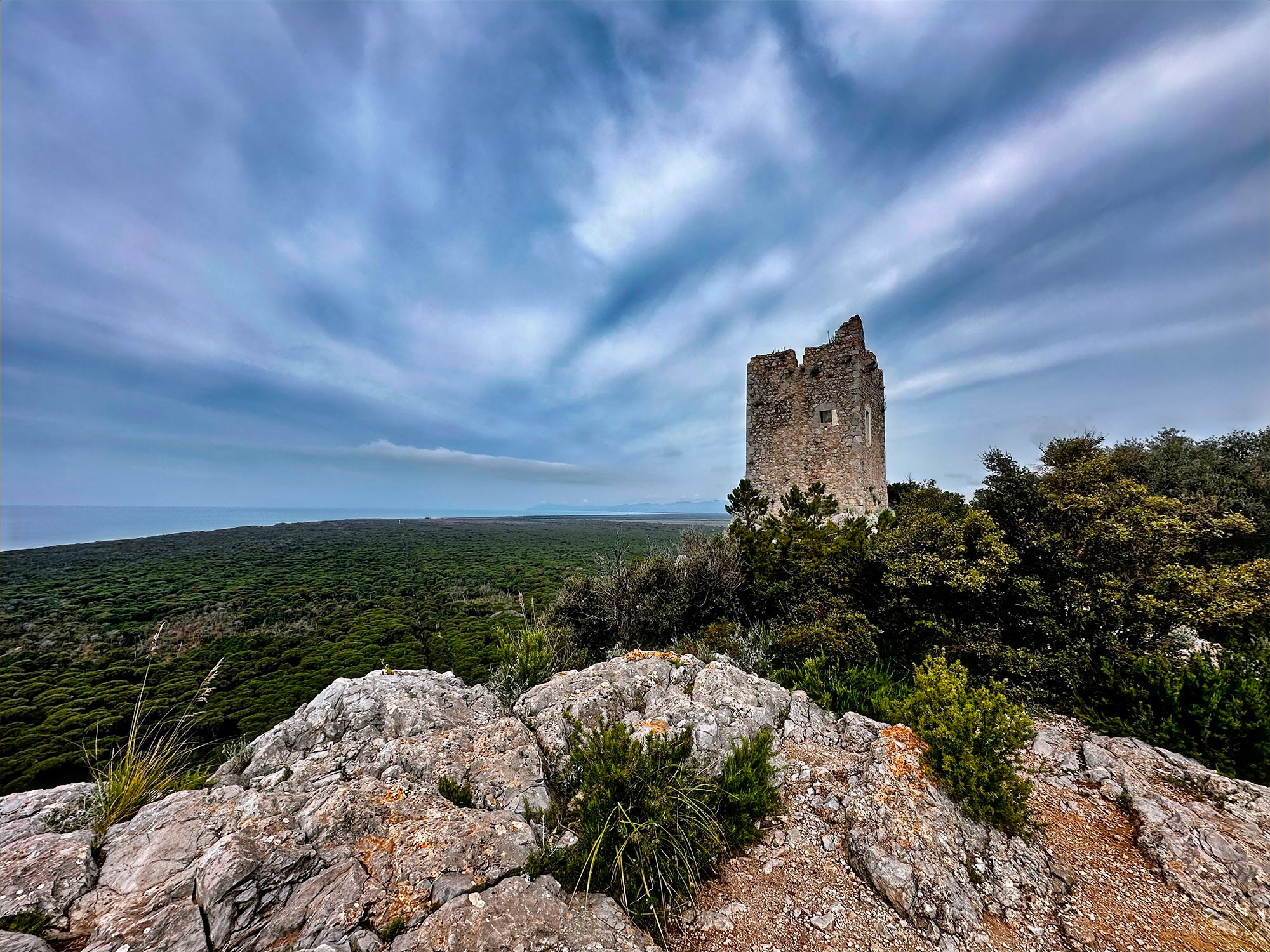
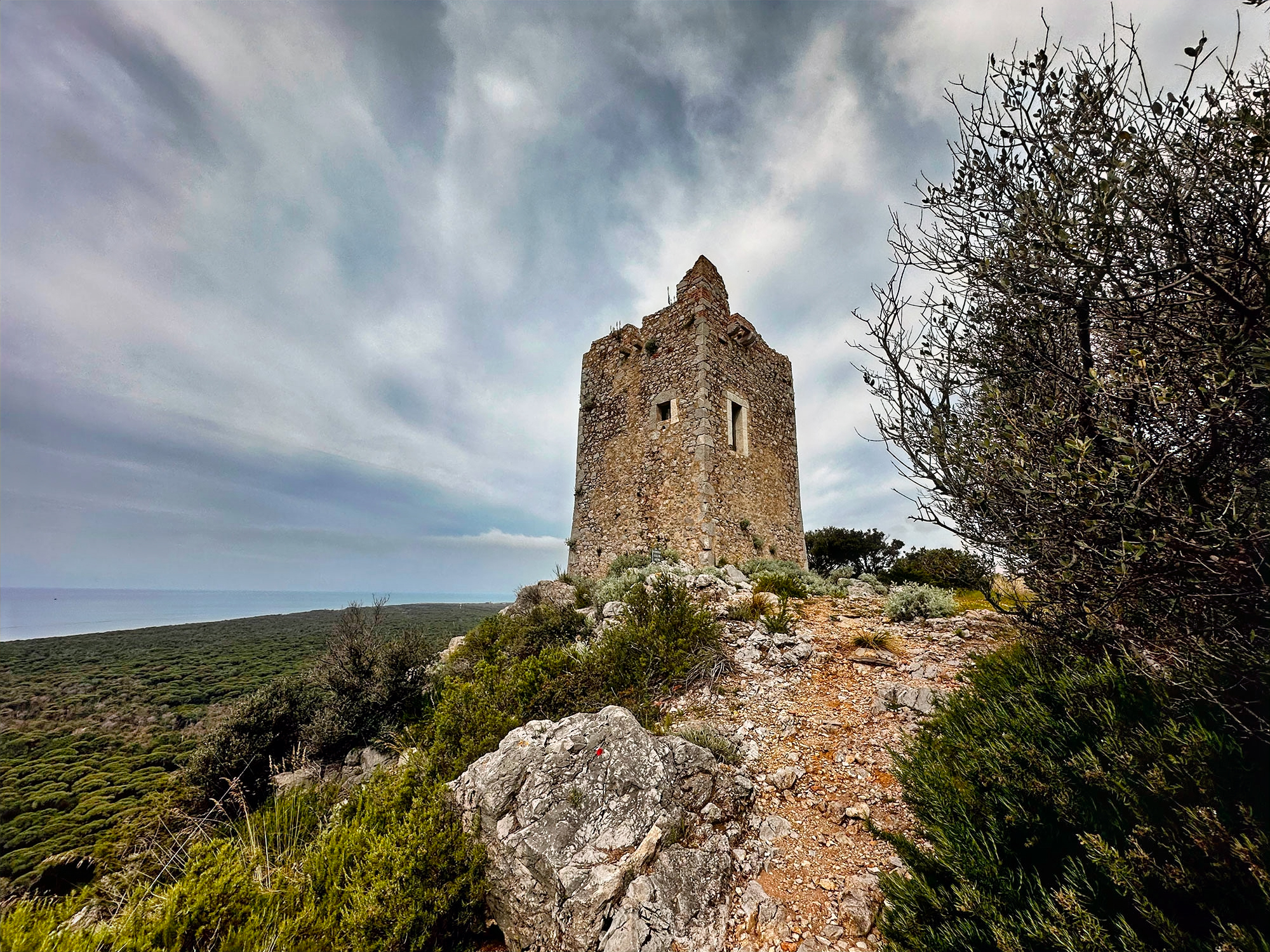
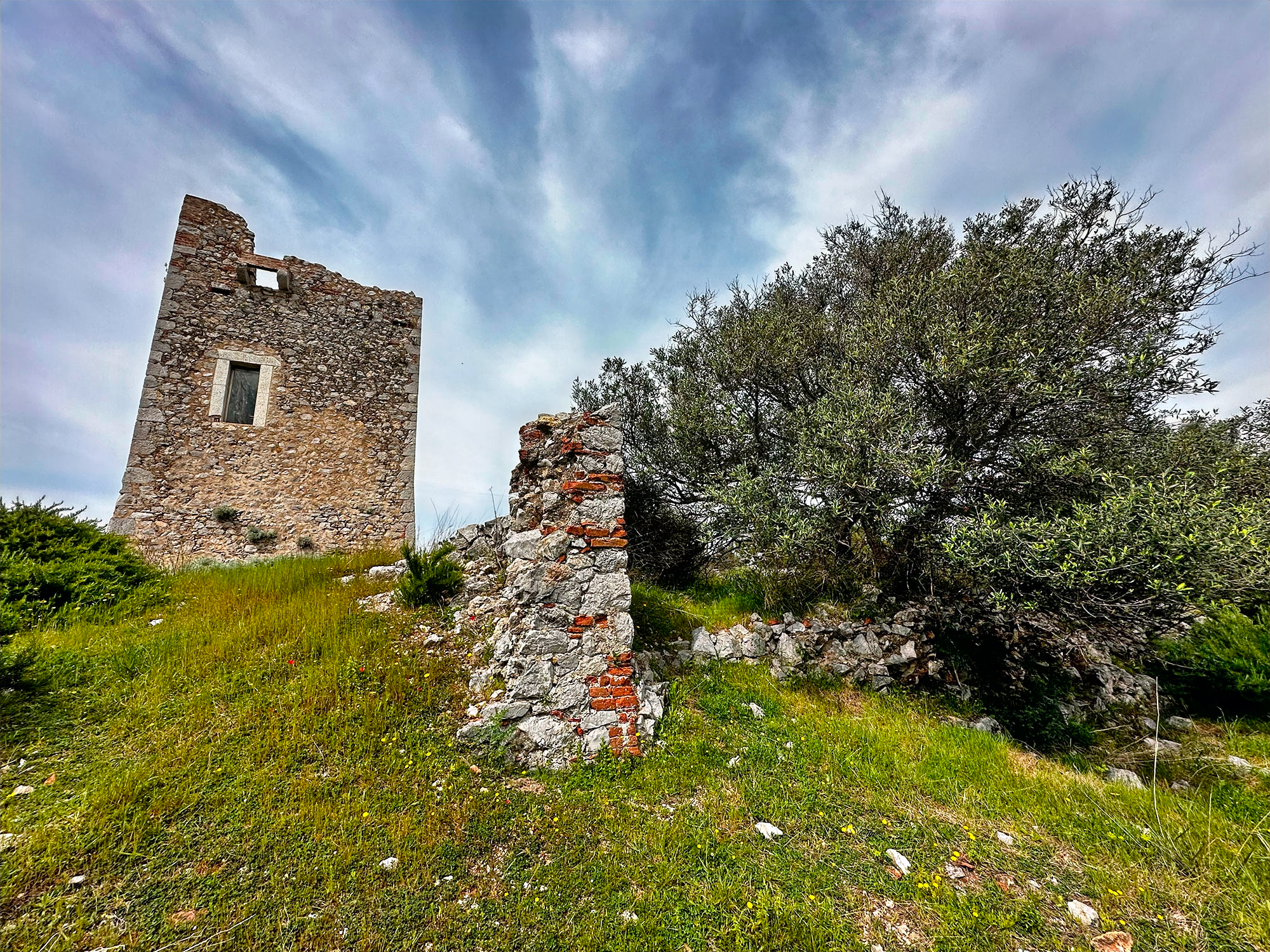
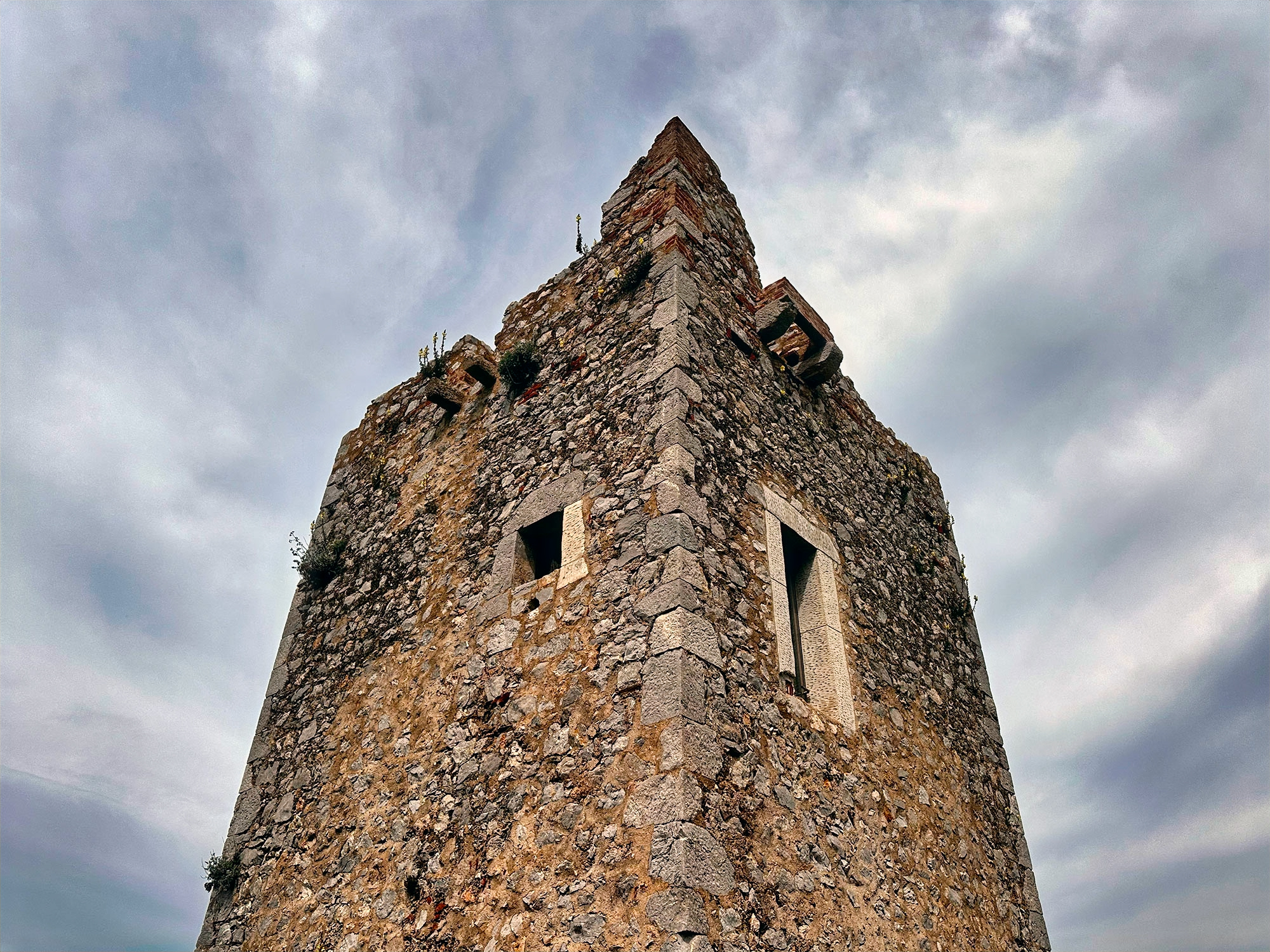

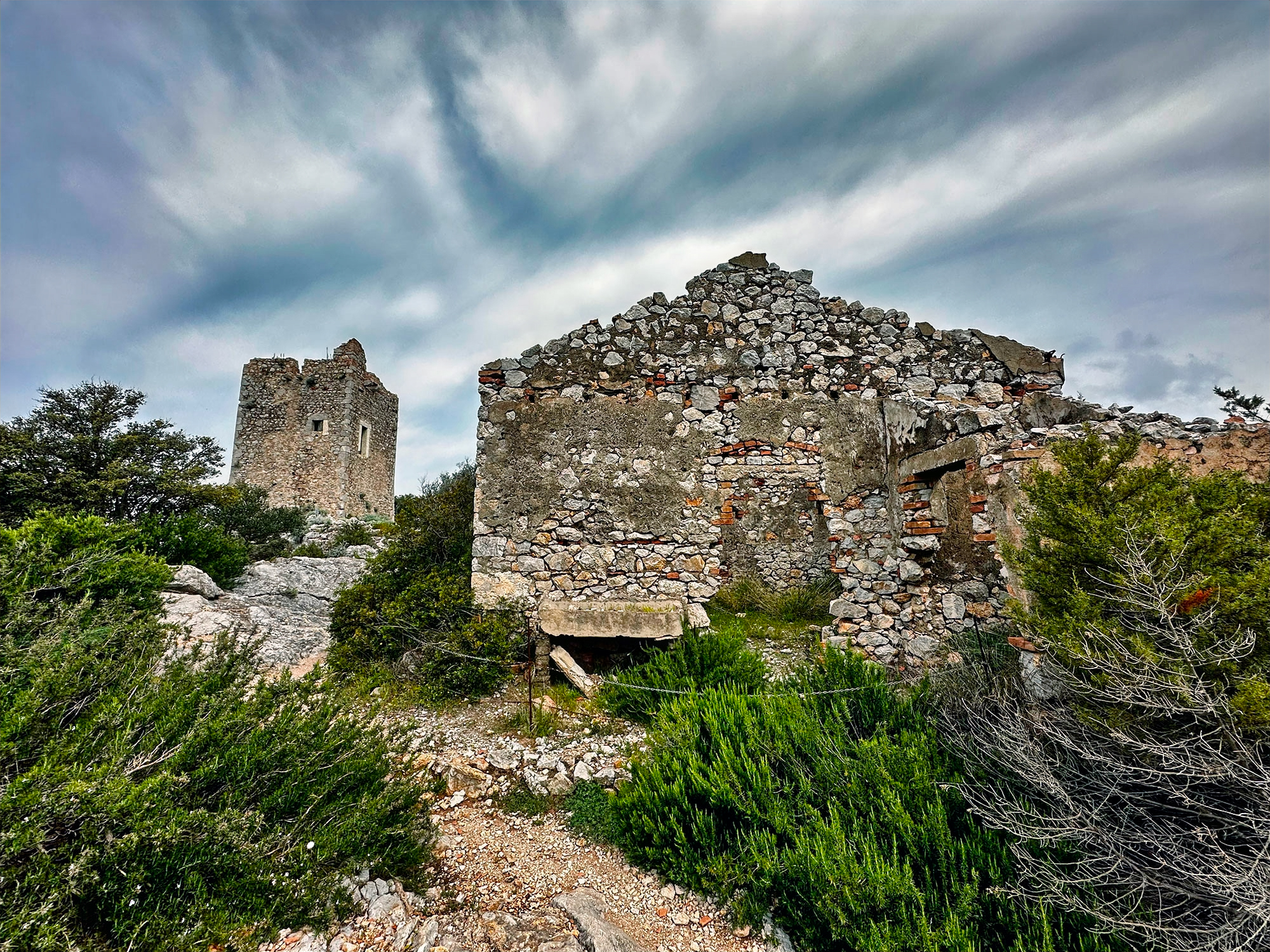
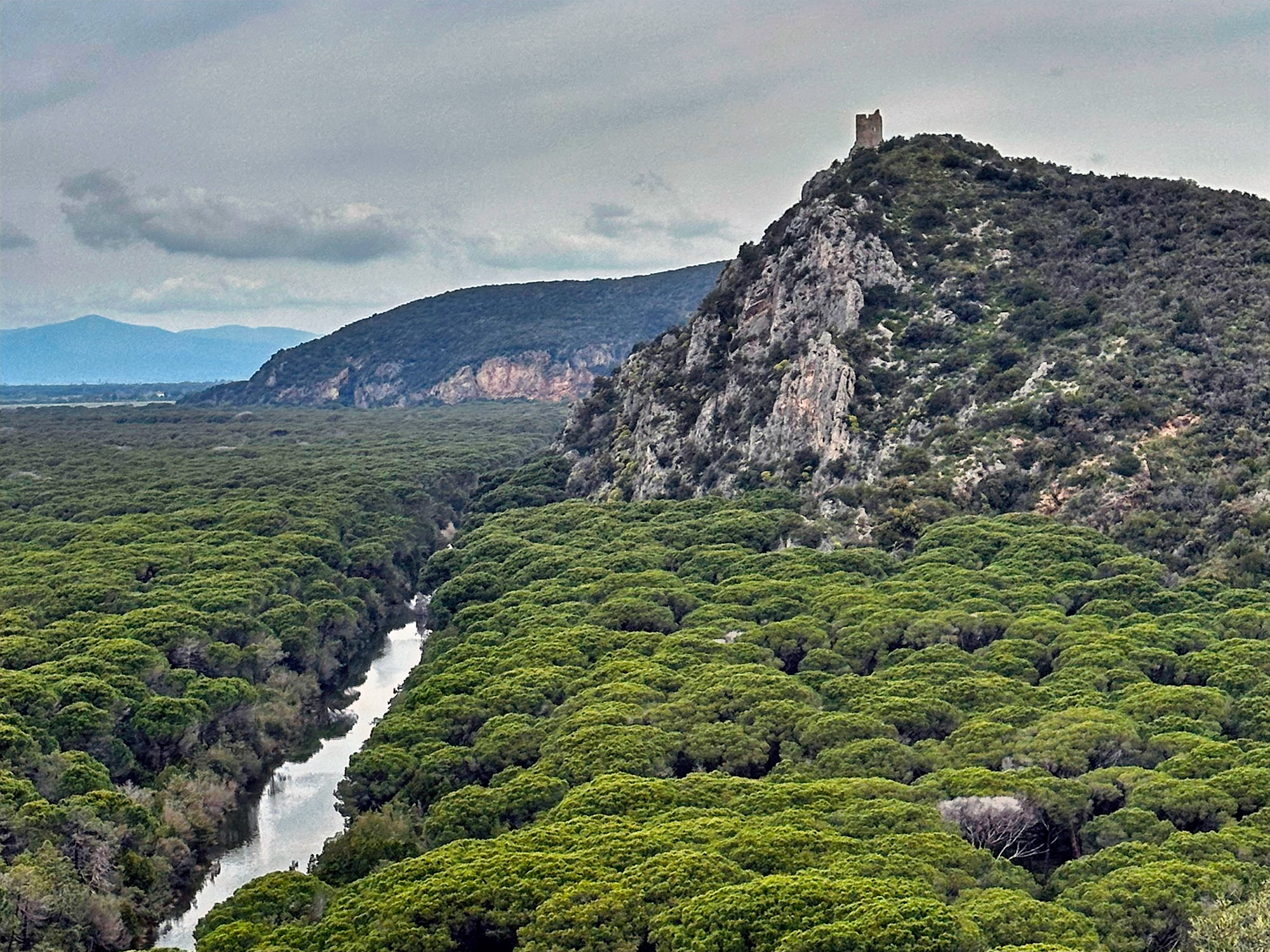








How to reach
The Tower is located within the Maremma Regional Park, along trail A2 'Le Torri'. The hike is 11.3 km long and leads to the Collelungo Tower. All details are available on the official website.
History
Along the coast of the Maremma Park there is a true coastal watch system, mostly characterized by square-plan towers made of local stone masonry. This system was built during the medieval period, with the primary goal of defending the territory from frequent Saracen raids that, between the 9th and 13th centuries, constantly threatened coastal communities.
Over the centuries, many of these towers were damaged, either by weathering or warfare. For this reason, in the second half of the 16th century, the government of the Medici State launched a systematic plan to reconstruct and strengthen coastal defenses. The objective was to create a continuous and efficient line of watchtowers, capable of quickly communicating through visual signals—often using smoke and fire—to warn of potential dangers approaching from the sea.
The Tower of Castelmarino was likely one of the first structures used for coastal surveillance within what is now the Maremma Park. It may correspond to the ancient Castrum Marinum, mentioned in a document from 1274, referring to a fortified outpost near the coastline.
The tower displays a construction type that sets it apart from others built in the area around the 16th century. It features a square plan and lacks a sloped base—a typical element in Renaissance military architecture—and is built with local stone masonry, including squared cornerstones. The materials used for its construction share the same geological features as the bedrock on which the tower stands, blending it seamlessly into the natural landscape.
Today, although partially in ruins, the Tower of Castelmarino remains a valuable testimony to the historical coastal defense system. It also serves as a privileged panoramic viewpoint. From its elevated position, one can gaze over much of the Tyrrhenian coastline and the Maremma hinterland, offering a compelling combination of nature, history, and military archaeology.
The Legend
Long ago, in this evocative place, lived the wealthy and beloved Lord of Castelmarino. He had no enemies and was said to be so confident in the peace that surrounded him that he often left his castle unguarded.
But one night, the unthinkable happened: a group of brigands managed to enter the manor and plunder it. Discovered during their escape, they were immediately pursued. In a desperate attempt to flee, they abandoned the loot—but fate was waiting for them.
Suddenly, the earth opened beneath their feet, swallowing them into a deep ravine. None of them survived. The treasure was recovered and, in an act of justice, distributed among the local poor.
It is said that, especially on winter nights, when the wind howls through the ruins of Castelmarino, strange wailing sounds can still be heard among the rocks. They are the voices of the brigands, forever imprisoned by the land itself as punishment for their transgression.